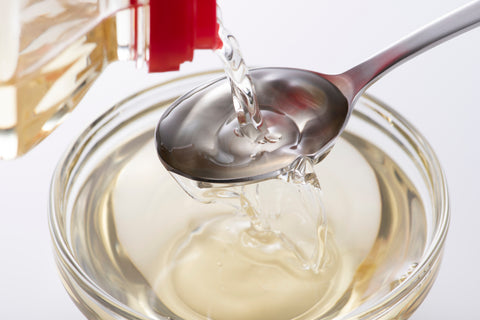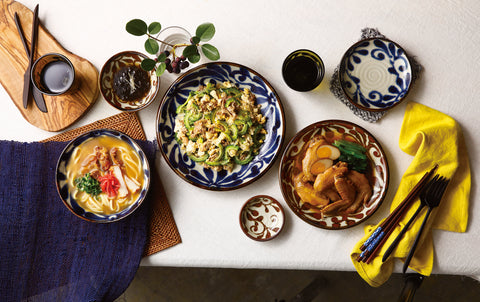When I moved to the UK, there were not many Japanese restaurants in Harrogate where we are based. 16 years on, Japanese cuisine has become one of the most popular food in the UK and many Japanese restaurants have opened since. Local supermarkets have started selling sushi and Japanese seasonings are easily available nowadays. It has become far more common to enjoy Japanese food in the home and a lot of people now try making dishes such as Sushi (of course!), Ramen, Tempura, Katsu Curry, etc, themselves. Have you ever tried to cook any of Japanese dishes? If not, would you like to try sometime? Great, then read this blog and you will learn a few tips for cooking some delicious Japanese meals!
Sa, Shi, Su, Se, So
To cook great food, you need great seasoning. I guess Soy sauce may pop in to your head first when you think of Japanese seasoning? Did you know there are 5 basic Japanese seasonings which are often described as the ‘culinary basics: Sa, Shi, Su, Se, So’?
Sa = Satou砂糖 (sugar)
Shi = Shio 塩(salt)
Su = Su 酢(vinegar)
Se = Shouyu 醤油(soy sauce) *Shouyu is used to pronounced as Seiyu
So = Miso味噌 (soybean paste)
So, those seasonings are essential for most Japanese dishes. Also, you should follow this order when seasoning your dish, that means not adding salt before adding sugar, miso can be left till the last minute to give your dish a lovely flavour without losing its aroma. But why in that order and what do those seasonings actually do to the ingredients? Let’s have a look at individual seasoning!

(Japanese Basic seasoning; from the top clockwise: sugar, salt, vinegar, soy sauce and miso)
Sugar
- Add sweetness
- Enhances the umami and richness of the dish
- Add aroma to the dish
- Tenderise the ingredients
Salt
- Intensify the taste of the dish and add saltiness
- Mitigate the acidity in the dish
- Act as a sterilizer, preservative, and odour remover
- Tenderize the ingredients
- Remove sliminess, impurities, and excess moisture (preparation of ingredients)
Vinegar
- Add acidity and flavour to the dish
- Mellow the saltiness in the dish
- Solidify proteins
- Prevent discoloration and bleach (preparation of ingredients)
Soy sauce
- Enhance saltiness, umami, sweetness, and depth of flavour
- Add colour and aroma to the dish
- Suppress any undesirable odour from the ingredients
- Improve the preservation of ingredients
Miso
- Add saltiness, umami, and aroma
- Eliminate the odour of ingredients
- Add richness to the flavour
- Harmonize the overall taste.
- Improve the preservation of ingredients.

(mirin is other basic seasoning too)
Sake and Mirin
Apart from those Sa, Shi, Su, Se, So, there are two other ingredients called Sake and Mirin. They are both kind of rice wine, however mirin is sweeter than Sake and gives glazing finish when cooked with soy sauce. Both add umami, enhance richness in dishes and remove unpleasant odours. On top of these, sake improves flavour penetration, and Mirin provides a glossy and shiny finish to dishes.
A Cheating tip
Now you know all about main seasoning for Japanese cooking! You can purchase them in a local supermarket or, if not, they are widely available online. I’d strongly recommend getting authentic seasoning if you can. But there is a cheating way to recreate Japanese dishes I can tell you… If you have some soy sauce and sugar, you can easily make Japanese style dish! For example, you would need Soy sauce, Sake, Mirin and Sugar when cooking Teriyaki dish, but you can make fairly nice one with just soy sauce and sugar, just replace sake and mirin with white wine and some water plus add extra sugar for sweetness.

(Teriyaki Tofu)
Would you like to try cook some Japanese dishes now? We have a range of Japanese cookbooks that will help you to satisfy your cooking enthusiasm!


And don’t forget! To make your cooking more authentic, you can serve it on authentic Japanese tableware too!

Why not add soy sauce pot along with your usual salt and pepper pots on your dinner table?

(Sumi Grey Japanese Soya Sauce Pot)
Now you are all ready for cooking Japanese food. Happy cooking!!
Are you following us on Facebook and Instagram? We share our new-in or recommended products, Japanese culture, tips on how to use our products etc. Come and join us!
